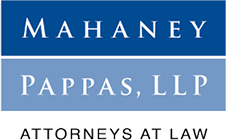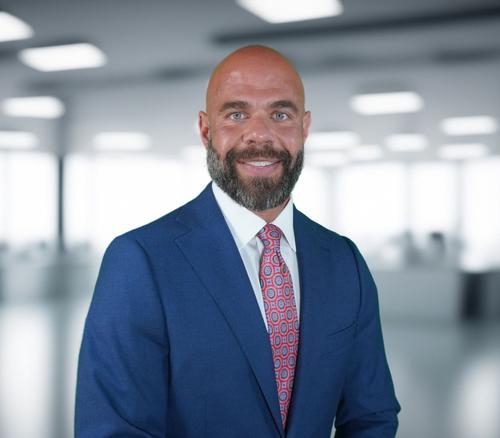 Upper extremity or arm injuries are very common in car accidents. Arm injuries can be extremely painful and cause significant disability especially if you are unable to use your arm for a while. The description “arm injury” is very general and can include multiple injuries to different parts of your arm. Some of the most common arm injuries sustained after a car accident include: broken bones, dislocated elbow, muscle strain, and radial head dysfunction. Typically, people think of back, neck, and head injuries as common car accident injuries, but arm and elbow injuries are just as common. This is because your arms and elbows are exposed and receive little protection from a seat belt or airbag.
Upper extremity or arm injuries are very common in car accidents. Arm injuries can be extremely painful and cause significant disability especially if you are unable to use your arm for a while. The description “arm injury” is very general and can include multiple injuries to different parts of your arm. Some of the most common arm injuries sustained after a car accident include: broken bones, dislocated elbow, muscle strain, and radial head dysfunction. Typically, people think of back, neck, and head injuries as common car accident injuries, but arm and elbow injuries are just as common. This is because your arms and elbows are exposed and receive little protection from a seat belt or airbag.
How Arm and Elbow Injuries Happen in Car Crashes
Car accidents ranges in severity. More severe crashes, such as head-on collisions or roll-over crashes, often result in more severe injuries. In the numerous cases we’ve handled, we have seen several causes of arm injuries caused by car accidents. Side collisions, or T-bone accidents, are the most common type of accident to cause an arm or elbow injury. A T-bone accident is when the front of a vehicle strikes the side of another vehicle, forming a “T” shape accident. If a motor vehicle is struck on its side at high speeds, there is little protection for the occupants as opposed to a rear-end collision or front-end collision. At least with rear-end or front-end there is a larger area between the car’s occupants and the rear or front of the car. But, a car that is struck on its side doesn’t offer much room between the other car and the side of occupant’s car.
Seat belts and air bags are the primary mechanism to protect a vehicle’s occupants from injury in the event of a crash. However, properly wearing your seat belt and shoulder belt does not guarantee that you will not be injured. Arm and elbow injuries can occur after airbag deployment, shattered glass, or if an arm has been slammed into the steering wheel, dashboard, or ground. In a T-bone collision, the driver or passenger’s momentum is usually jolted sideways, causing their arm to be crushed between the car door or middle console.
Types of Arm and Elbow Injuries
Now that we know how arm and elbow injuries can occur in car crashes, let’s take a more detailed look at some of the most common arm and elbow injuries we see at Mahaney & Pappas, LLP:
Broken or Fractured Bones
Broken and fractured bones are some of the more severe arm injuries suffered in a car accident.
- Distal Radius Fracture Break. Your radius is a bone of the forearm. This type of injury is more commonly known as a wrist fracture. Treatment for a radial fracture includes a cast for immobilization and conservative courses of physical therapy. In more severe cases, such as a radius break, surgery is sometimes needed.
- Ulna Fracture. Your ulna is the other long bone that composes the forearm. A fractured ulna usually occurs in combination with other injuries listed below. Ulna fractures can vary in location and severity. Treatment for an ulna fracture include immobilization in a plaster cast for multiple weeks and rehabilitation, such as physical therapy. In severe fractures, surgery may be required to implant a bone graft to stabilize and heal the fracture.
- Distal Humerus Fractures. A distal humerus fracture is a small break in the lower end of the humerus bone. Your humerus bone is the bone that connects your shoulder to your elbow. A fracture in this area can be extremely painful and drastically impact elbow motility.
- Olecranon Fracture. Your olecranon is the tip of your elbow. More specifically, this part of the bone is part of the ulna. Your olecranon does not receive much protection from muscles or soft tissues and therefore is susceptible to injury. Mild olecranon fractures can be treated with a splint. However, more commonly than not, pieces of the bones are moved out of place and surgery is required to restore the bone and motion in the joint.
Dislocated Elbow
An elbow dislocation occurs when your radius and/or ulna become unattached from your humerus. A more severe dislocation would be when both the radius and ulna move out of place. Severe pain, swelling, and the inability to bend your arm are the most common signs of an elbow dislocation. The dislocation will need to be fixed by a doctor. Sometimes, anesthesia is needed in more complex elbow dislocations. When the elbow bones are moved back into the correct joint formation, it is common for your arm to be placed in a sling or splint for proper healing.
Muscle Strain
A muscle strain is a stretch or tear in a muscle. This can happen in your bicep or elbow muscles. A muscle strain is often associated with a dull or aching arm pain with movement. In a car accident, a muscle strain is caused by force out of normal body position. A medical professional can evaluated and rule out any more serious injuries in addition to the arm muscle strain.
Radial Head Dysfunction
A radial head dysfunction is similar to an olecranon fracture, however, the both is not chipped or broken in any places. Your radial head connects your radius bone to your humerus bone. A radial head dysfunction injury occurs when your elbow is jammed or struck during a car accident. This type of injury can cause pain, swelling, redness, muscle spasms, and muscle tightness.
Contact Our Framingham Car Accident Attorneys Today
An arm or elbow injury can result in numerous damages, including extensive medical bills, medical expenses, loss of income, and significant pain and suffering. The severity of an arm or elbow injury and the extensive damage it may create, seeking fair and just compensation can be difficult. An experienced personal injury lawyer can help get you the maximum financial compensation you deserve.
If you or someone you know has suffered an arm or elbow injury because of someone else’s negligent driver, you should speak to a car accident expert. Joe Mahaney and Chuck Pappas have devoted their careers and law office to representing injured car accident victims in Massachusetts. For a complimentary case evaluation please contact us online, or call (508) 879-3500. We are happy to speak with you.

